Designing a Unique Rock Garden Landscaping
Creating a rock garden is like painting a masterpiece with nature as your canvas. It’s a wonderful way to transform a dull outdoor space into a vibrant oasis that showcases your personality and creativity. Imagine walking into your backyard and being greeted by a stunning arrangement of rocks and plants that seem to dance in harmony with each other. Rock gardens not only add visual interest but also provide a habitat for various wildlife, making them a perfect blend of beauty and functionality.
When you think about designing your unique rock garden, consider it an opportunity to express yourself. The beauty of a rock garden lies in its diversity; you can mix different types of rocks, colors, and plant species to create a landscape that tells a story. Whether you prefer a minimalist design or a more elaborate setup, the key is to find a balance that resonates with your style. So, let’s dive into the essentials of rock garden landscaping and explore how to create a space that not only looks good but feels good too!
Before you start gathering rocks and plants, the first step in your rock garden journey is selecting the perfect location. Think of your garden as a stage; the right backdrop can make all the difference. Look for a spot that receives ample sunlight, as most plants thrive in bright conditions. However, too much sun can be harsh, so consider areas that get partial shade as well. Additionally, pay attention to the drainage in your chosen location; rocks can retain heat and moisture, so ensuring good drainage is essential to prevent waterlogging.
Visibility is another important factor. You want your rock garden to be a focal point in your outdoor space, so choose a location where it can be easily seen and appreciated. Whether it’s near a patio, a walkway, or even visible from your living room window, make sure it’s a place that draws the eye. Remember, a well-placed rock garden can enhance not just your yard but your entire home’s aesthetic!
Now that you have your location, it’s time to think about the rocks themselves. The types of rocks you choose can dramatically impact the overall look and feel of your garden. From smooth pebbles to jagged boulders, each type of stone brings its own unique character. Consider using a mix of sizes and shapes to create a natural, layered effect. For example, large rocks can serve as anchors, while smaller stones can fill in gaps and add texture.
One of the biggest decisions you’ll face is whether to use natural or artificial rocks. Both options have their pros and cons, so let’s break it down:
| Type of Rock | Benefits | Considerations |
|---|---|---|
| Natural Rocks | Authenticity, blends with landscape, supports local ecosystems | Can be heavy, may require more effort to source |
| Artificial Rocks | Uniformity, lightweight, easier to arrange | May lack the natural look, can be less eco-friendly |
Natural rocks provide a sense of authenticity that artificial stones often struggle to match. They blend seamlessly with the surrounding landscape, creating a cohesive look that feels organic. Additionally, using local stones can support local ecosystems, as they often provide habitats for various wildlife.
On the flip side, artificial rocks are incredibly versatile. They come in various colors and textures, allowing for creative designs. Plus, they are often lighter and easier to work with, making them a practical choice for gardeners who want to experiment with different layouts without the heavy lifting.
The arrangement of rocks is crucial to your garden's visual appeal. Think of it like building a sculpture; each stone plays a role in the overall composition. Layering rocks of different sizes can create depth and interest. For instance, placing larger boulders at the back and smaller stones in front can draw the eye and create a sense of perspective. Don't be afraid to experiment with angles and positions—sometimes the most unexpected arrangements yield the most stunning results!
No rock garden is complete without the right plants. Choosing the right species is vital for a successful garden that thrives in rocky environments. Look for plants that can withstand drought and poor soil conditions. Succulents, alpine plants, and ground covers are excellent choices that not only survive but flourish in these conditions. When arranging your plants, consider their height and spread to create a balanced look. You want your plants to complement the rocks, not compete with them!
Drought-resistant plants are a rock gardener’s best friends. They require less water and thrive in well-drained soil, making them perfect for your garden. Some popular options include:
- Sedums: These hardy succulents come in various colors and shapes, adding charm to any rock garden.
- Thyme: This aromatic herb not only smells great but also creates beautiful ground cover.
- Lavender: Known for its stunning blooms and fragrance, lavender can elevate the aesthetic of your rock garden.
Establishing distinct planting zones can enhance the organization of your rock garden. Group plants based on their needs—sunlight, water, and soil type. This not only makes maintenance easier but also creates a visually appealing layout. For instance, place sun-loving plants in one area and shade-tolerant varieties in another. This thoughtful arrangement can lead to a more harmonious garden that thrives throughout the seasons.
Maintaining a rock garden is essential for its longevity and beauty. Regularly check for weeds, as they can quickly take over your beautiful space if left unchecked. A layer of mulch can help suppress weeds and retain moisture. Additionally, keep an eye on your plants; deadheading flowers and pruning overgrown areas can keep your garden looking fresh and vibrant. Remember, a little maintenance goes a long way in preserving the beauty of your rock garden, allowing you to enjoy it for years to come!
- How much sunlight does a rock garden need? Most rock gardens thrive in full sun, but some plants prefer partial shade. Observe your chosen location before planting.
- Can I use any type of rock? While you can use various rocks, ensure they are suitable for your climate and soil conditions.
- How do I prevent weeds in my rock garden? Regular maintenance, including mulching and hand-pulling weeds, can help keep your rock garden weed-free.
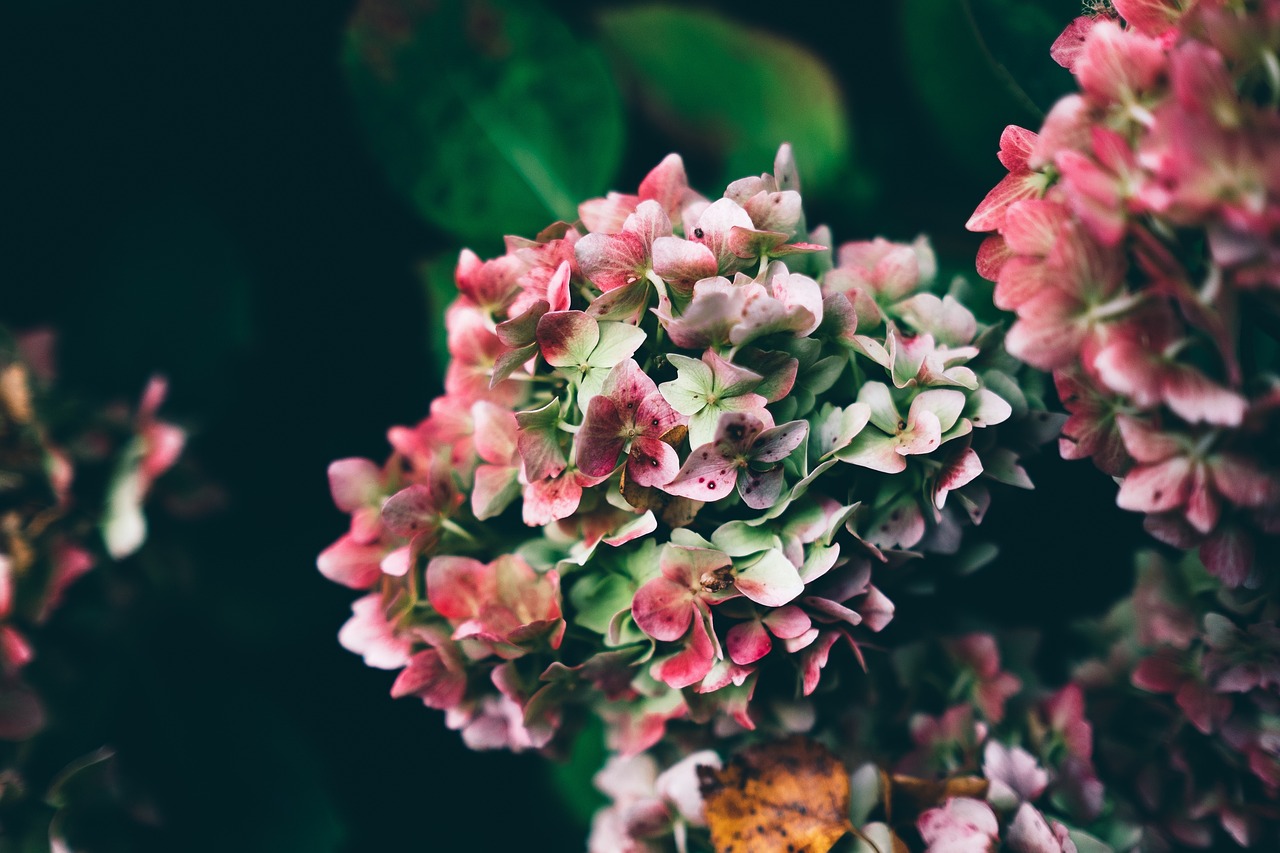
Choosing the Right Location
When it comes to creating a stunning rock garden, is absolutely crucial. Just like a painter needs the perfect canvas, your garden needs the ideal spot to shine. Think about how much sunlight the area receives throughout the day. Most rock gardens thrive in full sun, so aim for a location that basks in those warm rays for at least six hours a day. If your chosen spot is too shady, your plants might struggle to grow, leaving your beautiful rocks looking a bit lonely.
Next up is drainage. Imagine your garden as a sponge; if it can’t drain properly, it will become waterlogged and soggy, leading to unhappy plants and a less-than-ideal environment. Look for a site that has good drainage, preferably on a slight slope. This will not only help excess water drain away but also create a natural look as water flows over the rocks, mimicking nature's design.
Visibility is another important factor. You’ll want to place your rock garden where it can be admired, whether that’s from your patio, a window, or a frequently used pathway. After all, what’s the point of creating a masterpiece if it’s hidden away? Think about how the garden will fit into the overall landscape of your yard. You want it to be a focal point, drawing the eye and inviting people to explore its beauty.
Additionally, consider the soil type in your chosen area. Rock gardens typically thrive in well-drained, sandy soils, so if your yard has heavy clay, you might need to amend it. You can mix in some gravel or sand to improve drainage and create a suitable environment for your plants. Remember, a little preparation can go a long way in ensuring your rock garden flourishes.
Lastly, take a moment to observe the natural elements around your chosen spot. Are there existing trees, shrubs, or other features that will complement your rock garden? Incorporating these elements can enhance the overall aesthetic and create a more cohesive look. After all, nature is the best artist, and your job is to work with it, not against it.
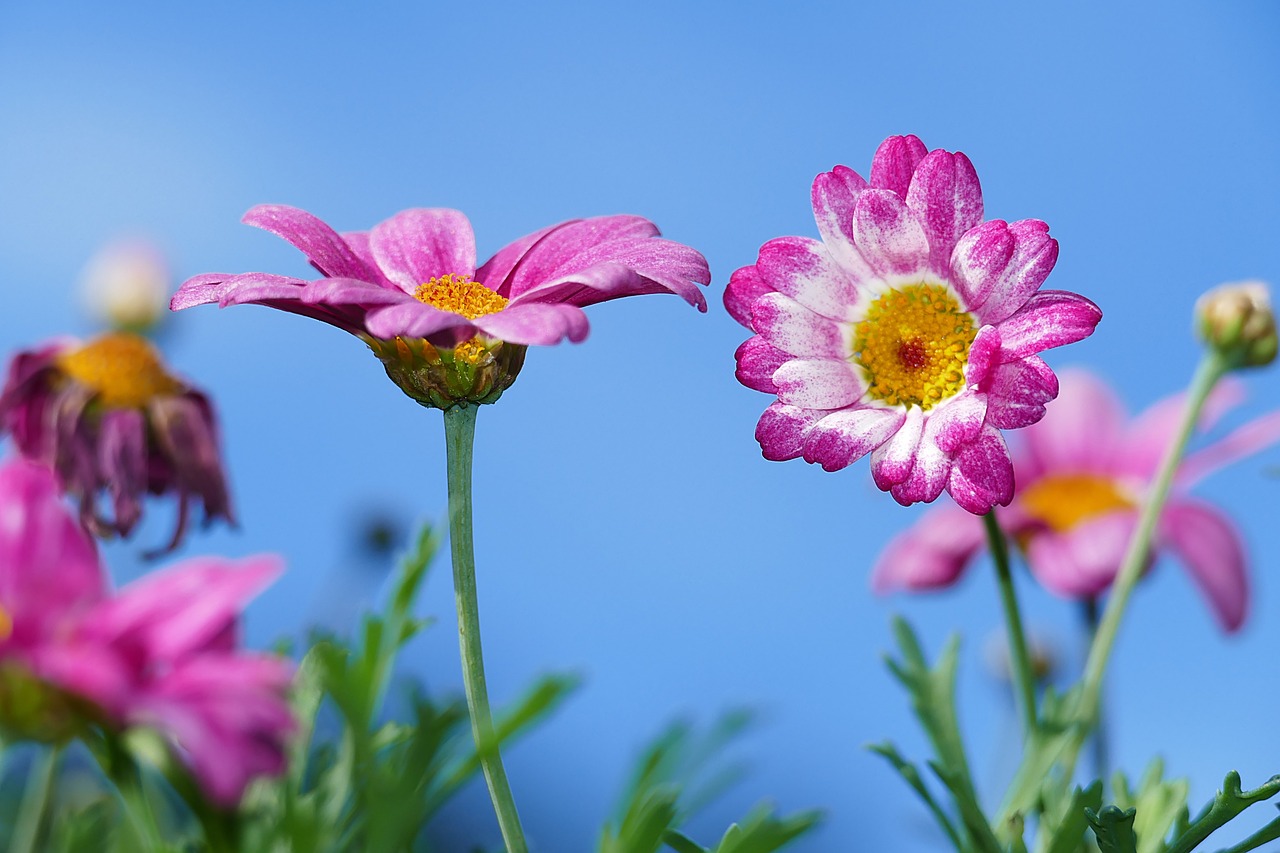
Types of Rocks and Materials
When it comes to designing a rock garden, the you choose can significantly influence the overall aesthetic and feel of your outdoor space. Just like selecting the right ingredients for a recipe, the right rocks can create a harmonious blend that enhances the natural beauty of your garden. Think of your rock garden as a canvas where each stone plays a crucial role in the final masterpiece.
There are various types of rocks to consider, each bringing its unique texture, color, and character to your landscape. For instance, granite is a popular choice due to its durability and availability in a range of colors, making it versatile for any design. On the other hand, limestone offers a softer, more natural look with its earthy tones and can be easily shaped for creative arrangements. Here’s a closer look at some common types of rocks you might consider:
| Type of Rock | Characteristics | Best Uses |
|---|---|---|
| Granite | Durable, available in various colors | Pathways, focal points |
| Limestone | Soft texture, earthy tones | Natural-looking arrangements |
| Slate | Flat, layered appearance | Ground cover, walls |
| River Rock | Smooth, rounded stones | Water features, decorative borders |
In addition to natural stones, you might also consider incorporating pebbles and gravel into your design. These materials can fill in gaps between larger rocks, create pathways, or even serve as a base for your planting zones. The sound of gravel crunching underfoot can evoke a sense of tranquility, making your garden a peaceful retreat.
Moreover, don't overlook the potential of artificial rocks. These can be crafted to mimic natural stones while offering advantages like lighter weight and uniformity. For instance, they can be molded into specific shapes or colors that may be hard to find in nature. However, it’s essential to balance the use of artificial materials with natural ones to maintain an organic feel in your garden.
Ultimately, the choice of rocks and materials should align with your vision for the garden. Are you aiming for a rugged mountain landscape, a serene desert oasis, or a lush Mediterranean retreat? Each type of rock can help you achieve that vision, transforming your outdoor space into a stunning visual narrative. So, as you plan your rock garden, consider the unique characteristics of each rock type and how they can work together to create a cohesive and inviting environment.
- What is the best type of rock for a rock garden? It depends on your aesthetic preference, but granite and limestone are popular choices due to their durability and variety.
- Can I mix different types of rocks in my garden? Absolutely! Mixing different types of rocks can add depth and visual interest to your rock garden.
- Are artificial rocks a good option? Yes, artificial rocks can be a great choice for specific designs, offering versatility and ease of use.
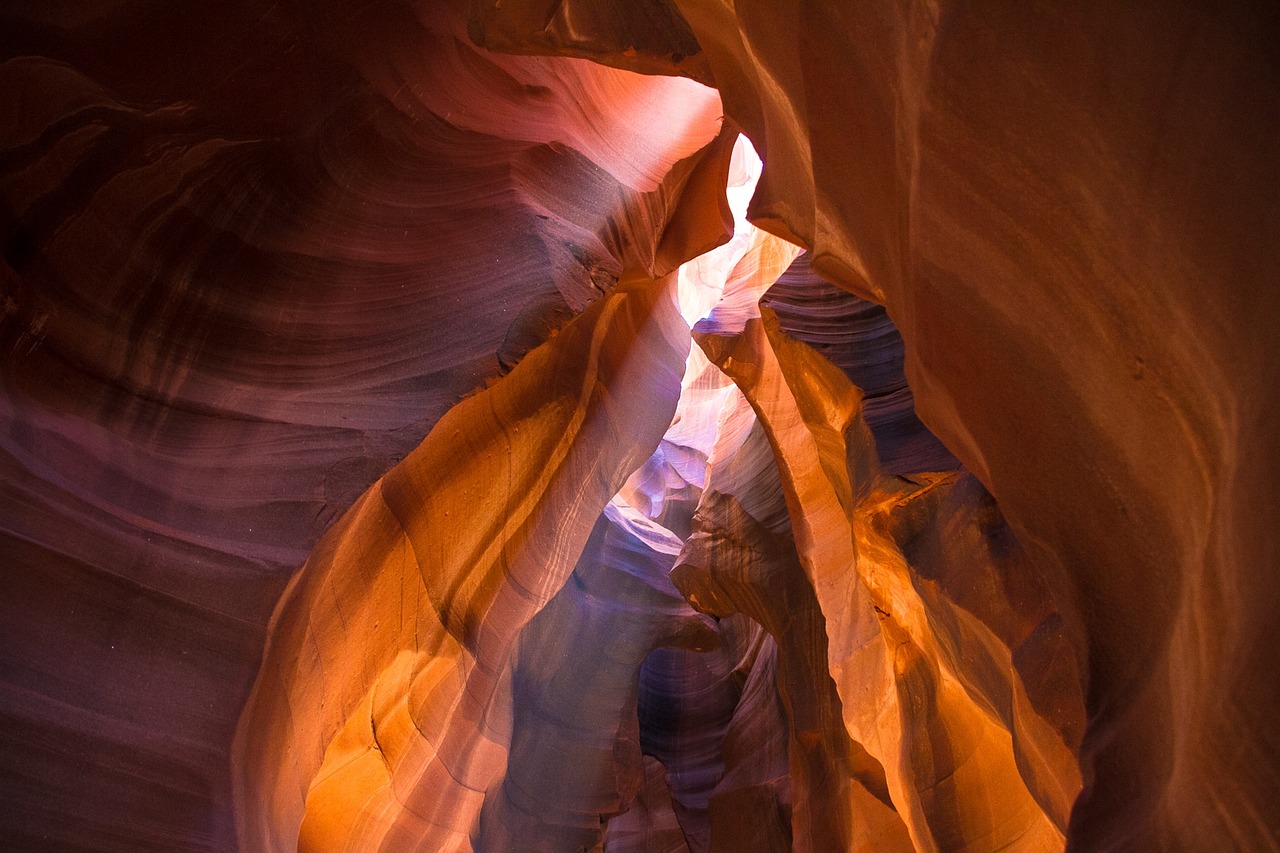
Natural vs. Artificial Rocks
When it comes to designing your rock garden, one of the most significant decisions you'll face is whether to use natural rocks or artificial alternatives. Each option has its own unique set of benefits and challenges, and understanding these can help you create a garden that not only looks stunning but also meets your specific needs.
Natural rocks, for instance, offer an authenticity that is hard to replicate. They come in various shapes, sizes, and colors, allowing you to create a truly unique landscape. Imagine walking through a garden where every stone tells a story of its journey through time. Natural stones blend seamlessly with the surrounding environment, providing a rustic charm that artificial rocks often lack. Furthermore, using natural materials supports local ecosystems, as these rocks are part of the existing landscape. This means that they can provide habitats for various species, contributing to biodiversity.
On the flip side, artificial rocks bring a level of versatility that can be quite appealing. They can be molded into specific shapes and sizes, allowing for more creative designs that might be challenging to achieve with natural stones. For example, if you're looking to create a waterfall feature or a specific pathway, artificial rocks can be tailored to fit your vision perfectly. They are often lighter than their natural counterparts, making them easier to transport and arrange in your garden. This can be a significant advantage for those who may not have the physical strength or tools required to move heavy stones.
However, the choice between natural and artificial rocks ultimately depends on your design goals and personal preferences. Here’s a quick comparison table to help you weigh the options:
| Feature | Natural Rocks | Artificial Rocks |
|---|---|---|
| Authenticity | High | Moderate |
| Versatility | Low | High |
| Weight | Heavy | Light |
| Cost | Variable | Generally lower |
| Environmental Impact | Supports local ecosystems | Can be eco-friendly depending on materials |
In conclusion, both natural and artificial rocks have their place in rock garden landscaping. If you're aiming for a garden that feels like a natural extension of the landscape, natural rocks are your best bet. However, if you’re looking for something more customizable and easier to work with, artificial rocks may be the way to go. Ultimately, the choice is yours, and it should reflect your personal style and the vision you have for your outdoor space.
- What are the best types of natural rocks for a rock garden? Popular options include granite, limestone, and sandstone, as they offer various colors and textures.
- Are artificial rocks safe for the environment? Yes, many artificial rocks are made from eco-friendly materials, but it's essential to check the product specifications.
- How do I maintain my rock garden? Regular maintenance includes removing weeds, checking for erosion, and ensuring that plants are healthy and well-watered.

Benefits of Natural Rocks
When it comes to designing a rock garden, the choice of materials can significantly influence not just the aesthetics but also the overall feel of the space. One of the standout options is natural rocks, which bring a plethora of benefits to your outdoor sanctuary. First and foremost, natural rocks offer an authentic look that can seamlessly blend with the surrounding landscape. Unlike artificial alternatives, they have a unique character and texture that can enhance the visual appeal of your garden.
Another compelling advantage of using natural rocks is their contribution to local ecosystems. These stones often provide habitats for various forms of wildlife, such as insects and small animals, which can create a thriving ecosystem right in your backyard. By incorporating natural elements, you're not only beautifying your space but also supporting biodiversity. This makes natural rocks an eco-friendly choice that aligns with sustainable gardening practices.
Furthermore, natural rocks are incredibly durable. They can withstand the test of time, weathering various environmental conditions without losing their charm. This longevity means that once you invest in natural stones, you won’t need to replace them frequently, making them a more economical choice in the long run.
In addition to their durability, natural rocks can also help with drainage in your garden. Their porous nature allows water to flow through, reducing the risk of waterlogging that can harm plant roots. This characteristic is particularly beneficial in rocky gardens, where proper drainage is essential for the health of drought-resistant plants.
To summarize, here are some key benefits of using natural rocks in your rock garden:
- Authenticity: Provides a natural and unique aesthetic.
- Eco-Friendly: Supports local ecosystems and biodiversity.
- Durability: Lasts longer than artificial alternatives.
- Improved Drainage: Helps prevent waterlogging.
So, if you’re looking to create a rock garden that not only looks stunning but also contributes positively to the environment, natural rocks are undoubtedly the way to go. They embody the essence of nature, allowing you to cultivate a space that is both beautiful and beneficial.
Q: How do I choose the right natural rocks for my garden?
A: Consider the colors, textures, and sizes that will complement your existing landscape. It's also important to think about the practical aspects like weight and how they will fit into your overall design.
Q: Can I mix different types of natural rocks?
A: Absolutely! Mixing different types of rocks can create visual interest and depth in your garden. Just ensure that they harmonize well together in terms of color and texture.
Q: How do natural rocks affect plant growth?
A: Natural rocks can enhance drainage and provide a natural habitat for beneficial organisms, which can positively influence plant growth. Just make sure to choose plants that thrive in rocky conditions.
Q: Are natural rocks more expensive than artificial ones?
A: While the initial cost may be higher, the longevity and low maintenance requirements of natural rocks often make them a more cost-effective choice over time.

Advantages of Artificial Rocks
This article explores creative ideas and practical tips for designing a distinctive rock garden, blending natural beauty with innovative landscaping techniques to enhance outdoor spaces.
Selecting the ideal spot for your rock garden is crucial. Consider sunlight, drainage, and visibility to ensure your garden thrives and complements your outdoor environment.
Different rocks can create unique aesthetics in your garden. Explore various types of stones, pebbles, and materials to enhance texture, color, and visual interest.
Deciding between natural stones and artificial alternatives can affect the overall look of your garden. Each option has its benefits, so weigh them carefully based on your design goals.
Natural rocks provide authenticity and blend seamlessly with the landscape. They also support local ecosystems, making them an eco-friendly choice for your rock garden.
Artificial rocks have gained popularity among gardeners for several compelling reasons. Firstly, their versatility allows you to create unique designs that might be challenging to achieve with natural stones. With a wide range of shapes, sizes, and colors available, you can easily customize your rock garden to match your personal style and the overall theme of your outdoor space.
Moreover, artificial rocks are often lighter than their natural counterparts, making them easier to transport and arrange. This can save you a lot of time and effort during the installation process. Imagine trying to lift a large, heavy boulder versus easily positioning a lightweight replica; the difference is significant!
Another advantage is their uniformity. Unlike natural stones, which can vary greatly in color and texture, artificial rocks can provide a more consistent look throughout your garden. This uniformity can create a polished and cohesive design that enhances the overall aesthetic appeal.
Additionally, artificial rocks are typically designed to be durable and resistant to weathering. They won't chip or fade as easily as natural stones might, ensuring that your garden maintains its beauty over time. This durability makes them a practical choice, especially for those living in areas with extreme weather conditions.
Finally, artificial rocks can also be eco-friendly. Many are made from recycled materials, which can help reduce your environmental footprint while still providing a stunning visual impact in your garden.
In summary, the advantages of artificial rocks include:
- Versatility in design options
- Lightweight and easy to handle
- Uniformity in appearance
- Durability against weathering
- Eco-friendliness with recycled materials
With these benefits in mind, artificial rocks can be a fantastic addition to your rock garden, providing both functionality and beauty.
The arrangement of rocks plays a significant role in the garden's visual appeal. Learn effective techniques for layering and positioning stones to create depth and interest.
Selecting the right plants is vital for a successful rock garden. Discover which species thrive in rocky environments and how to arrange them harmoniously with your stones.
Drought-resistant plants are ideal for rock gardens, as they require less water and thrive in well-drained soil. Explore popular options that add beauty and resilience to your landscape.
Establishing distinct planting zones can enhance the organization of your rock garden. Learn how to group plants based on their needs and characteristics for a balanced look.
Maintaining a rock garden is essential for its longevity and beauty. Discover practical maintenance tips to keep your garden looking fresh and vibrant throughout the seasons.
Q: How do I choose the right location for my rock garden?
A: Look for a spot that receives adequate sunlight, has good drainage, and is visible from your home to enjoy its beauty.
Q: Can I mix natural and artificial rocks in my garden?
A: Absolutely! Combining both can create an interesting contrast and enhance the overall aesthetic of your rock garden.
Q: What types of plants work best in a rock garden?
A: Drought-resistant plants like succulents, alpine plants, and ground covers are excellent choices for rock gardens.
Q: How often should I maintain my rock garden?
A: Regular maintenance, such as weeding and checking for erosion, is essential. Aim for seasonal upkeep to keep your garden vibrant.
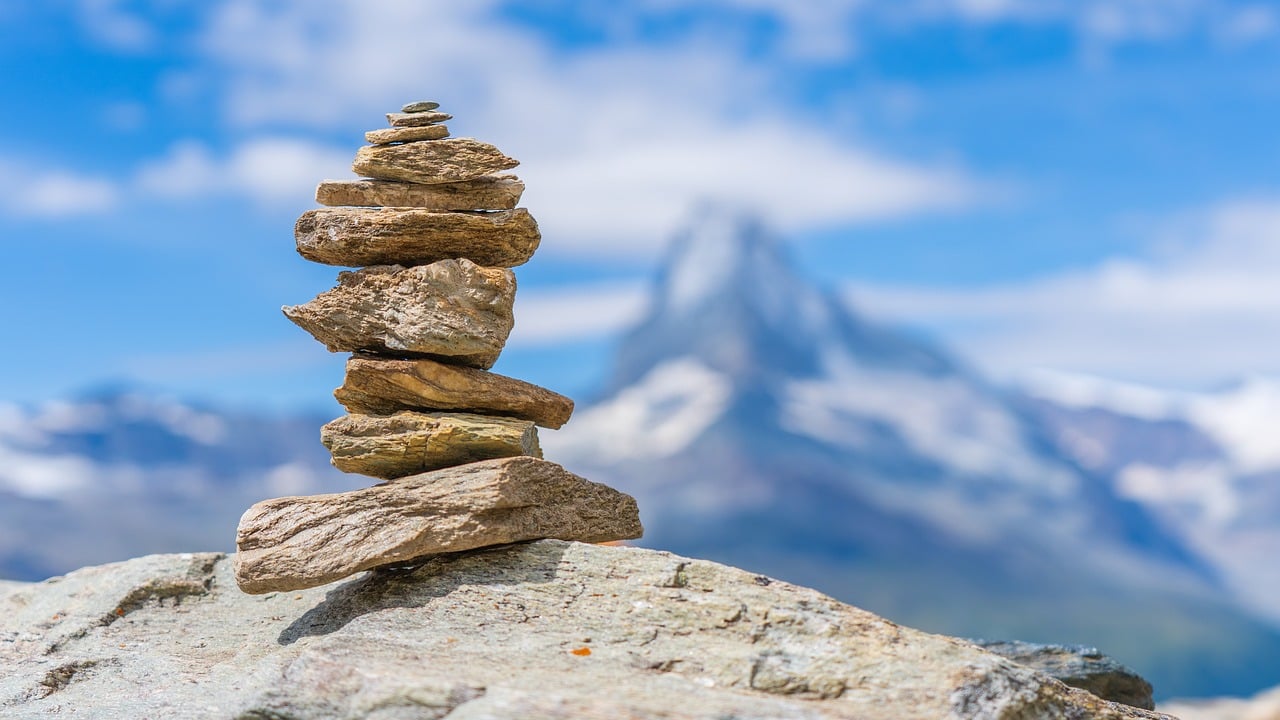
Layering and Arranging Rocks
When it comes to creating a stunning rock garden, the arrangement of rocks is not just a matter of tossing stones around haphazardly. Instead, it’s a meticulous art that can transform your outdoor space into a breathtaking landscape. Imagine your garden as a three-dimensional canvas where every rock plays a role in the overall masterpiece. The way you layer and position these rocks can create a sense of depth, intrigue, and harmony.
One essential technique in rock arrangement is the concept of layering. Think of it like building a cake; each layer adds to the overall structure and appeal. Start by placing larger stones at the base, which provides a solid foundation. This not only adds stability but also creates a natural look, as larger rocks are typically found at the base of hills and mountains in nature. Then, gradually add smaller stones on top, creating a cascading effect. This method not only enhances visual interest but also mimics natural landscapes, making your garden feel more organic.
Another important aspect is to consider the orientation of the rocks. Positioning them at varying angles can create shadows and highlights that change throughout the day, adding a dynamic element to your garden. It’s like giving your garden a personality; it evolves with the light. You might want to experiment with different arrangements before settling on a final design. Don't hesitate to move rocks around until you find an arrangement that feels just right. Remember, it’s all about finding a balance between chaos and order.
In addition to layering and orientation, don’t forget about the spaces between the rocks. These gaps can be filled with soil and planted with your chosen vegetation. This not only softens the harsh lines of the rocks but also integrates the plants into the overall design. Consider using a mix of pebbles and gravel to create pathways or borders around your rock formations. This can lead the eye through the garden, inviting visitors to explore every nook and cranny.
Finally, let’s talk about the color palette of your rocks. Using a variety of stones in different shades can create a vibrant and eye-catching display. For example, combining light-colored stones with darker ones can create a striking contrast that draws attention. You can even incorporate some colorful pebbles or decorative stones to add a touch of whimsy. Just like an artist chooses colors for a painting, you have the power to select stones that resonate with your personal style and the overall theme of your garden.
In summary, layering and arranging rocks in your garden is a crucial step in achieving a harmonious and visually appealing landscape. By considering the size, orientation, and color of your rocks, as well as the spaces between them, you can create a rock garden that not only looks good but also feels right. So, get out there, roll up your sleeves, and start arranging those rocks like the artist you are!
- What types of rocks are best for a rock garden? Natural stones like granite, limestone, and slate are excellent choices due to their durability and aesthetic appeal.
- How do I ensure proper drainage in my rock garden? Make sure to select a location with good drainage and consider using a mix of sand and gravel in the soil to enhance drainage.
- Can I use artificial rocks in my garden? Yes, artificial rocks can be beneficial for creating a uniform look and are often easier to work with.
- What plants grow well in rock gardens? Drought-resistant plants such as succulents, sedums, and alpine plants thrive in rocky environments.

Incorporating Plants and Vegetation
When it comes to designing a rock garden, one of the most exciting aspects is that not only complement the stones but also thrive in the unique conditions that a rocky environment provides. The right plants can transform your garden from a simple stone arrangement into a vibrant ecosystem teeming with life. Think of your rock garden as a canvas where each plant is a brushstroke, contributing to a larger masterpiece.
First and foremost, it's essential to understand the environmental conditions of your chosen location. Factors like sunlight, soil type, and moisture levels play a significant role in determining which plants will flourish. For instance, if your rock garden is situated in a sunny spot with well-drained soil, you might want to consider drought-resistant plants that can withstand the heat and require minimal watering. Some popular options include:
- Sedum - These succulent plants are hardy and come in various colors and textures, making them perfect for adding visual interest.
- Thyme - Not only does it provide a lovely fragrance, but it also forms a lush carpet that can soften the sharp edges of rocks.
- Lavender - This aromatic herb thrives in sunny, dry conditions and attracts pollinators, adding both beauty and biodiversity to your garden.
In addition to selecting the right plants, arranging them thoughtfully is crucial for achieving a harmonious look. Consider creating planting zones within your rock garden. This means grouping plants based on their water and light requirements, which not only enhances the aesthetic appeal but also promotes healthier growth. For example, you could have a zone dedicated to low-water plants like succulents and another for flowering perennials that enjoy a bit more moisture.
Furthermore, think about vertical layering. Just like a well-composed painting, a rock garden benefits from varying heights and textures. Taller plants can be placed at the back or center, while shorter varieties can fill in the front. This arrangement not only creates depth but also allows each plant to shine without overshadowing its neighbors. Imagine walking through your garden and being greeted by a cascade of colors and shapes, all working together to create a stunning visual experience.
Another aspect to consider is the seasonality of your plants. By incorporating a mix of evergreen and seasonal plants, you can ensure that your rock garden remains visually appealing throughout the year. For instance, while your summer blooms might steal the show, the evergreen plants will provide structure and interest during the colder months.
Lastly, don't forget about the importance of maintenance. Regularly checking on your plants, removing any weeds, and ensuring they receive the right amount of water will keep your rock garden looking fresh and vibrant. A well-maintained garden is like a well-tuned instrument; it sings beautifully when cared for properly.
- What are the best plants for a rock garden? Look for drought-resistant plants like sedum, thyme, and lavender, which thrive in rocky, well-drained soil.
- How do I arrange plants in my rock garden? Consider grouping plants by their water and light needs, and use vertical layering for a more dynamic look.
- Can I use artificial plants in a rock garden? While natural plants are preferred for their ecological benefits, artificial plants can be used for decoration, though they won't provide the same environmental advantages.

Choosing Drought-Resistant Plants
When it comes to designing your rock garden, one of the most important decisions you'll make is selecting the right plants. Drought-resistant plants are not just a practical choice; they can also add stunning beauty and resilience to your landscape. Imagine a garden that flourishes even in the hottest summer months, where vibrant colors and textures thrive without the need for constant watering. Sounds appealing, right? Well, let’s dive into how to choose the best drought-resistant plants for your rock garden!
First off, it's essential to understand the growing conditions of your rock garden. Since these gardens often feature well-drained soil and plenty of sunlight, choosing plants that naturally thrive in such environments is key. Succulents, for instance, are fantastic candidates. They store water in their leaves, allowing them to withstand dry spells. Consider popular varieties like sedum or aloe vera, which not only look great but are also low-maintenance.
Another fantastic option is ornamental grasses. These plants add movement and texture to your garden while being incredibly drought-tolerant. Think about incorporating blue fescue or Mexican feather grass. Their graceful blades will sway gently in the breeze, creating a dynamic visual effect. Plus, they require minimal care, making them perfect for busy gardeners.
Additionally, herbs are a wonderful choice for your rock garden. Not only do they provide culinary benefits, but many herbs are also drought-resistant. Thyme, rosemary, and lavender are excellent examples. They not only thrive in dry conditions but also attract pollinators, enhancing the ecological value of your garden.
Now, let’s not forget about perennials. These plants come back year after year, providing lasting beauty with minimal effort. Some great drought-resistant perennials include echinacea, black-eyed Susans, and daylilies. They can withstand periods of drought and still bloom beautifully, adding color and interest to your rock garden.
When arranging these plants, consider their height and spread. Place taller plants towards the back and shorter ones in front to create a layered effect. This not only enhances the visual appeal but also ensures that each plant gets the sunlight it needs to thrive.
In summary, choosing drought-resistant plants for your rock garden is a smart move that pays off in both aesthetics and sustainability. By selecting plants that are well-suited to your garden's conditions, you'll create a vibrant, low-maintenance landscape that flourishes even in the driest of times. So, go ahead and explore the beautiful options available, and watch your rock garden come to life!
- What are the best drought-resistant plants for a rock garden?
Some excellent choices include succulents like sedum, ornamental grasses like blue fescue, and drought-tolerant perennials like echinacea and black-eyed Susans.
- How do I care for drought-resistant plants?
While drought-resistant plants require less water, it's important to water them deeply during dry spells and ensure they have well-drained soil.
- Can I mix drought-resistant plants with other types?
Yes, but be cautious about the water requirements of other plants. Group plants with similar needs together for the best results.
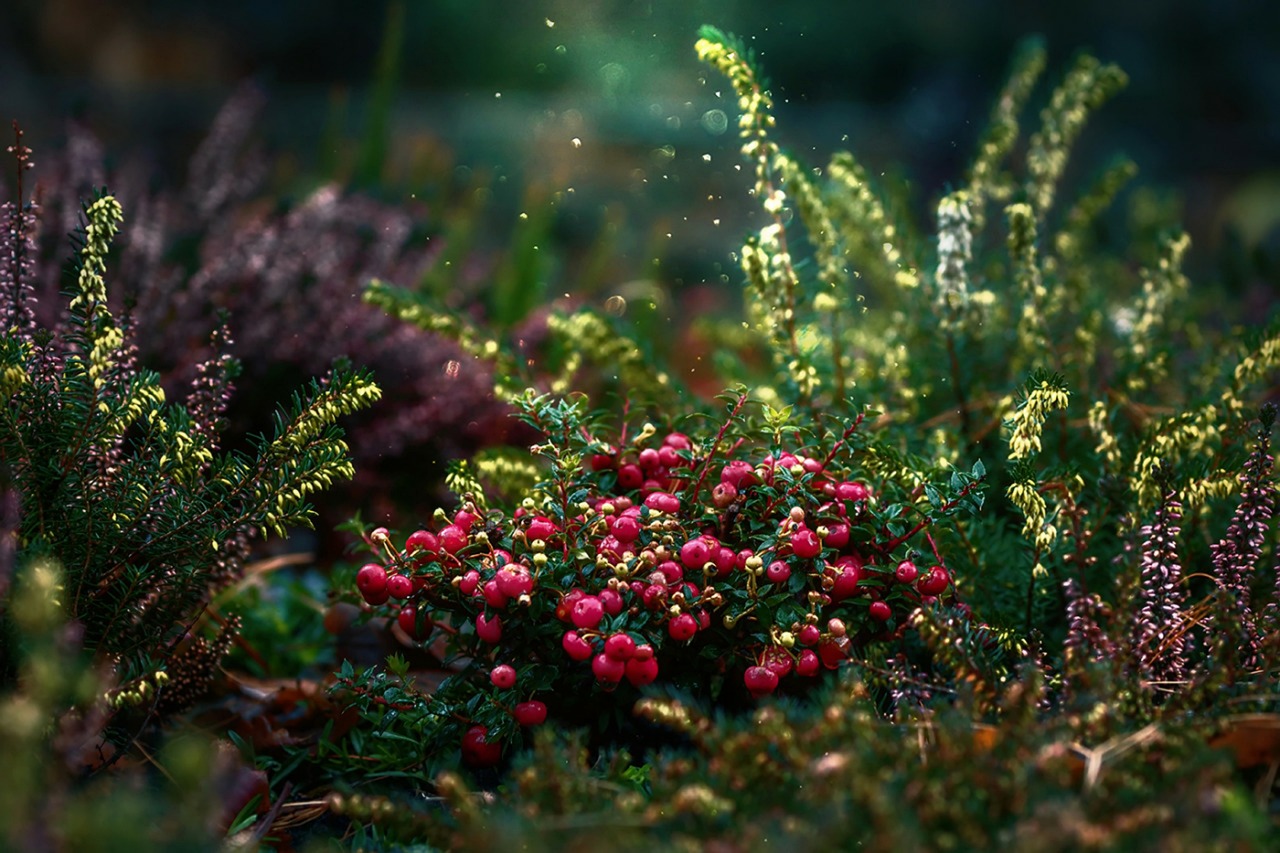
Creating Planting Zones
Establishing distinct planting zones in your rock garden is like drawing a map for your plants, guiding them towards their ideal growth conditions. Just as different regions of the world have unique climates and landscapes, your garden can benefit from a tailored approach to plant placement. By grouping plants with similar needs, you can create a harmonious environment that not only enhances the visual appeal of your garden but also promotes the health and vitality of your plants.
When planning your planting zones, consider factors such as sunlight, water requirements, and soil conditions. For instance, some plants thrive in full sun, while others prefer partial shade. By grouping sunlight-loving plants together, you can ensure that they receive the maximum amount of light they need to flourish. Conversely, shade-tolerant plants can be placed in more sheltered areas, preventing them from being overwhelmed by direct sunlight.
Next, think about water drainage. In rocky environments, water tends to drain quickly, making it essential to select plants that are drought-resistant for areas where water retention is low. This not only conserves water but also reduces maintenance efforts. For regions of your garden that may retain moisture, consider plants that thrive in such conditions, creating a balanced ecosystem.
To visualize your planting zones, you might find it helpful to create a simple
| Plant Type | Sunlight | Water Needs | Soil Type |
|---|---|---|---|
| Succulents | Full Sun | Low | Well-drained |
| Ferns | Partial Shade | Moderate | Moist, Rich |
| Lavender | Full Sun | Low | Well-drained |
| Hostas | Shade | High | Moist, Rich |
This table serves as a quick reference to help you determine which plants to group together based on their requirements. By creating these zones, you not only enhance the aesthetic appeal of your rock garden but also ensure that each plant can thrive in its designated area.
Lastly, don't forget about the visual aspect of your planting zones. Consider using varying heights and colors to create layers and depth in your garden. Taller plants can serve as a backdrop, while shorter ones can fill in the foreground, creating a stunning visual tapestry. This layering effect not only adds dimension but also draws the eye across the garden, making it a captivating space.
In summary, creating planting zones in your rock garden is an essential step towards achieving a thriving and beautiful outdoor space. By carefully considering the needs of your plants and arranging them thoughtfully, you can cultivate a garden that is both functional and visually appealing.
- What are the best plants for a rock garden? Drought-resistant plants like succulents, lavender, and ornamental grasses are excellent choices for rock gardens.
- How do I improve drainage in my rock garden? Incorporate sand or gravel into your soil mix to enhance drainage and prevent waterlogging.
- Can I use artificial rocks in my rock garden? Yes, artificial rocks can be used to create unique designs and are often easier to work with than natural stones.
- How often should I water my rock garden? Watering frequency will depend on the plants you choose, but generally, drought-resistant plants require less frequent watering.
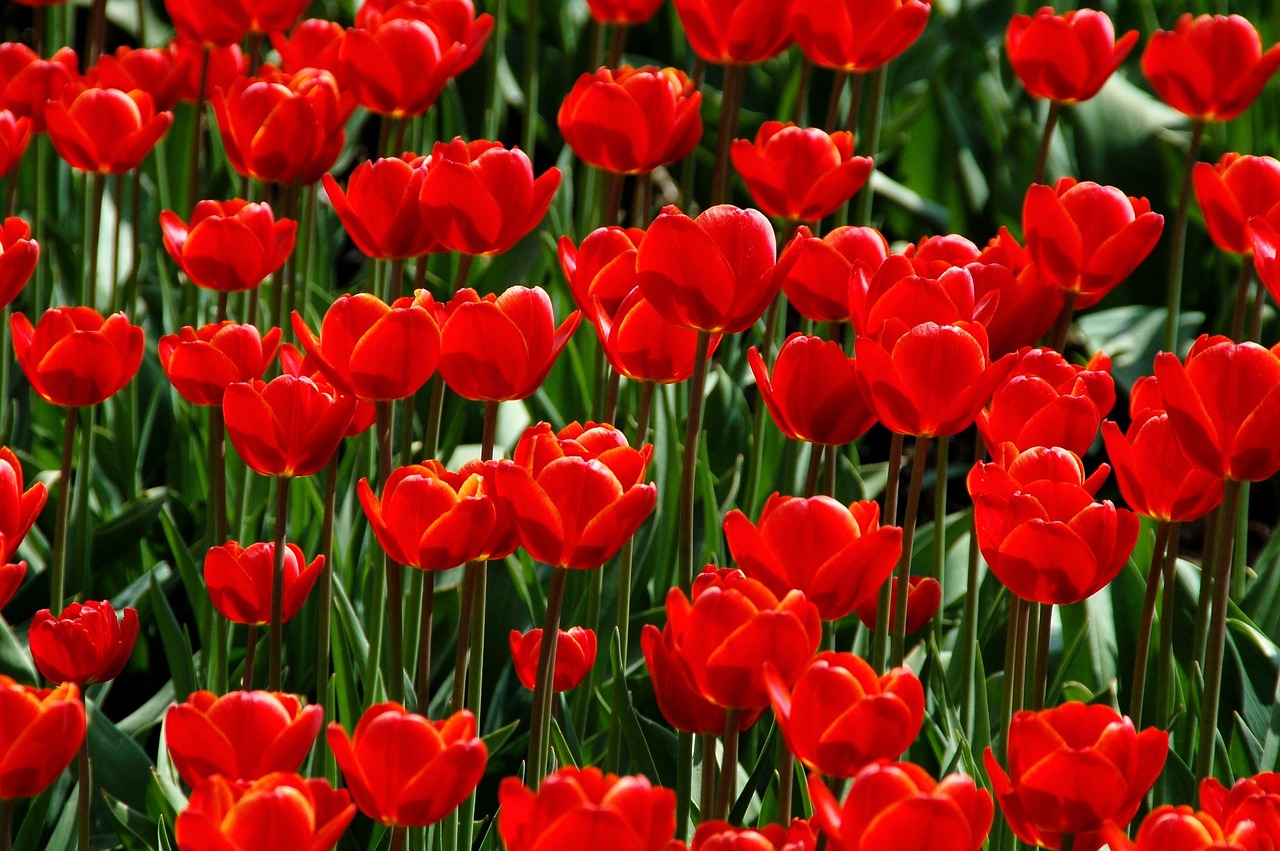
Maintenance Tips for Rock Gardens
This article explores creative ideas and practical tips for designing a distinctive rock garden, blending natural beauty with innovative landscaping techniques to enhance outdoor spaces.
Selecting the ideal spot for your rock garden is crucial. Consider sunlight, drainage, and visibility to ensure your garden thrives and complements your outdoor environment.
Different rocks can create unique aesthetics in your garden. Explore various types of stones, pebbles, and materials to enhance texture, color, and visual interest.
Deciding between natural stones and artificial alternatives can affect the overall look of your garden. Each option has its benefits, so weigh them carefully based on your design goals.
Natural rocks provide authenticity and blend seamlessly with the landscape. They also support local ecosystems, making them an eco-friendly choice for your rock garden.
Artificial rocks offer versatility and uniformity, allowing for creative designs. They are often lighter and easier to work with, providing practical benefits for gardeners.
The arrangement of rocks plays a significant role in the garden's visual appeal. Learn effective techniques for layering and positioning stones to create depth and interest.
Selecting the right plants is vital for a successful rock garden. Discover which species thrive in rocky environments and how to arrange them harmoniously with your stones.
Drought-resistant plants are ideal for rock gardens, as they require less water and thrive in well-drained soil. Explore popular options that add beauty and resilience to your landscape.
Establishing distinct planting zones can enhance the organization of your rock garden. Learn how to group plants based on their needs and characteristics for a balanced look.
Maintaining a rock garden is essential for its longevity and beauty. Just like any other garden, your rock garden requires a bit of love and attention to keep it vibrant and healthy. Regular maintenance ensures that your garden remains a stunning focal point in your outdoor space. One of the first things to consider is weeding. Weeds can quickly become a nuisance, competing with your plants for nutrients and water. Make it a habit to check your garden regularly, pulling out any unwanted plants. This not only keeps your garden tidy but also promotes the health of your desired flora.
Another key aspect of maintenance is monitoring drainage. After heavy rains, check that water is draining properly. If you notice pooling, you might need to adjust the placement of your rocks or add more gravel to improve drainage. Additionally, you should consider mulching around your plants. This helps retain moisture, suppress weeds, and add a polished look to your garden. Organic mulch can also break down over time, enriching the soil with nutrients.
Don't forget about seasonal care. In the spring, it's a good idea to prune any overgrown plants and check for any damage caused by winter weather. As the seasons change, you might want to refresh the look of your garden by rearranging some rocks or adding new plants. Regularly assess the health of your plants; if any are struggling, consider replacing them with more resilient varieties.
Lastly, keep an eye on pests. While rock gardens are generally less prone to pests than traditional gardens, they can still attract unwanted visitors. If you notice any signs of infestation, take action quickly to protect your plants. You might find that natural remedies, such as neem oil or insecticidal soap, work well without harming the environment.
Q: How often should I water my rock garden?
A: Watering frequency depends on the plants you choose and your local climate. Generally, you should water your rock garden deeply but infrequently, allowing the soil to dry out between waterings.
Q: Can I use any type of rock in my garden?
A: While you can use various rocks, it's best to choose those that complement your plants and the overall aesthetic of your garden. Avoid sharp-edged rocks that could harm your plants.
Q: What should I do if my plants aren't thriving?
A: Assess the conditions of your garden, including sunlight, drainage, and soil quality. You may need to adjust your plant selection or improve the soil with organic matter.
Frequently Asked Questions
- What is the best location for a rock garden?
Choosing the right spot for your rock garden is crucial. Look for areas that receive plenty of sunlight and have good drainage. You want a location that not only allows your plants to thrive but also enhances the overall beauty of your outdoor space.
- What types of rocks should I use in my rock garden?
There are many options when it comes to rocks for your garden! Natural stones like granite, limestone, and river rocks can provide a stunning aesthetic. Alternatively, artificial rocks offer uniformity and can be easier to work with. Consider your design goals and the look you want to achieve when selecting your materials.
- How can I layer and arrange rocks effectively?
Layering rocks is all about creating depth and visual interest. Start with larger stones at the bottom and gradually add smaller ones on top. This technique not only looks appealing but also mimics natural landscapes, making your garden feel more organic.
- What plants are best for a rock garden?
Drought-resistant plants are ideal for rock gardens since they thrive in well-drained soil and require less water. Consider options like succulents, sedums, and alpine plants. These hardy species will add color and texture to your garden while being low-maintenance.
- How should I organize my plants within the rock garden?
Creating distinct planting zones can help organize your rock garden. Group plants based on their water and sunlight needs, and consider their growth habits. This approach will lead to a balanced and visually appealing landscape.
- What maintenance do rock gardens require?
Maintaining a rock garden involves regular weeding, checking for pests, and ensuring that your plants are healthy. It's also important to refresh the mulch or gravel and prune your plants as needed to keep everything looking vibrant and well-kept.



















